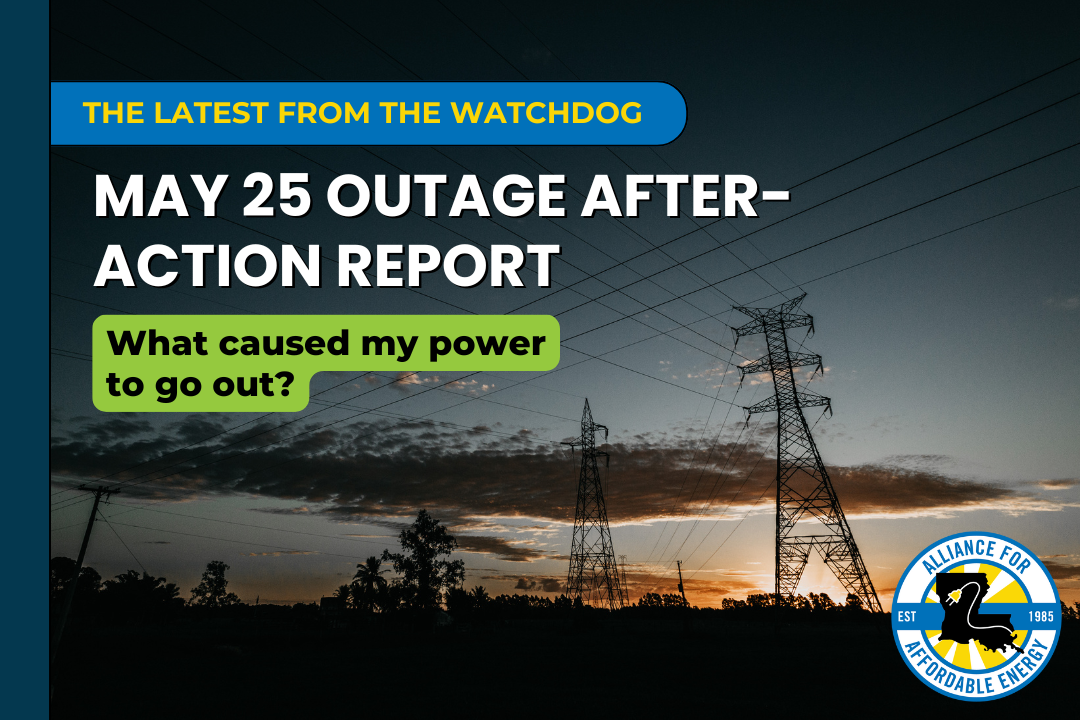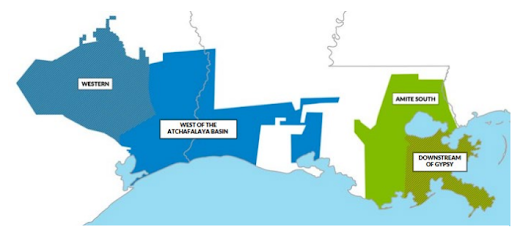
The LPSC Staff, Entergy Louisiana (ELL) and MISO have each released ‘After-Action Reports’ that take a deep-dive and investigate what caused the May 25, 2025 blackout, and to provide recommendations to avoid a similar type of blackout from happening again.
Below is a high-level summary of the reports.
1. Too many power plants were offline from planned and unplanned power plant outages. 50% of the generation in our area was unavailable.
ELL’s River Bend nuclear power plant was subject to an unplanned outage on May 21. The outage was a result of a leak in the reactor’s cooling system. The leak was repaired and River Bend returned to service on May 26.
ELL’s Little Gypsy 3 gas power plant also suffered an unplanned outage. The outage began on April 1 and was due to turbine vibration issues.
Washington Parish Energy Center Unit 2 gas power plant experienced an unplanned outage in the early afternoon of May 25. It returned to service and reached full output about fifteen minutes after the May 25 outage and load shed event began.
Because of this unit’s location relative to the transmission constraint, its outage did not contribute to the blackout.
Several non-Entergy generators in southeast and south-central Louisiana also were experiencing unplanned outages on May 25.

2. A major transmission line was out of service. That line usually moves power from southwest Louisiana to southeast Louisiana.
The Nelson–Richard 500kV transmission line was unable to operate on May 25. This was the result of damage from a tornado in March. This line moves power from southwest Louisiana to southeast Louisiana. The line was fully repaired and returned to service on May 27, 2025. According to Entergy no other planned or unplanned transmission outages contributed to the blackout.

3. Short timelines to act, limited communication, and a transmission outage designation unique to MISO left operators and utilities with limited time to manage the situation.
MISO is the only transmission operator with a temporary Interconnection Reliability Operating Limit (IROL) designation. A temporary IROL is a specific, urgent reliability designation used by MISO when a transmission line or system condition is temporarily limited, and exceeding that limit could lead to a widespread power outage, system instability, or cascading outages and physical grid damage. The unique temporary IROL designation results in a very limited amount of time to communicate between grid-operators, utilities and regulators.
The below recommendations are a high level summary of the three after-action reports prepared by Entergy Louisiana, MISO, and Public Service Commission staff/advisors (LPSC Staff Report, Entergy Louisiana After-Action Report, MISO After-Action Report).
Keep reading for more specifics on these recommendations.
Improve communications between local utilities, MISO, regulators, and the public during a transmission emergency.
Regulators in Louisiana, Arkansas, Mississippi and Texas and MISO must work together to develop regional plans for a grid that benefits everyone.
Our regulators must push utilities to fix load pockets by working regionally to expand transmission capacity and develop a regional, modern power grid. One way to do this is by finding solutions to and fixing the Amite South and Downstream of Gypsy (DSG) load pocket by planning in coordination with regional neighbors, and building more transmission.
MISO will begin a Load Pocket Risk Assessment in 2026. This assessment will examine the needs and solutions to potentially fix the load pocket issues in southeast Louisiana, where the May 25 blackout happened.